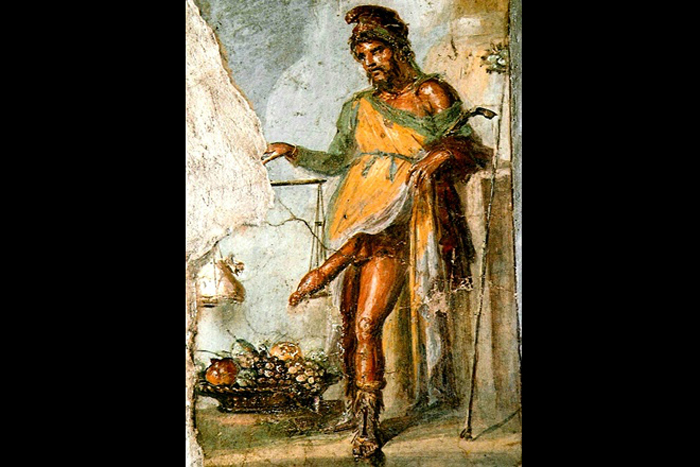Penis Disorder Found in Fertility God Pompeii Portrait

One of Pompeii's most recognized frescoes, the portrait of the Greek god of fertility Priapus, holds an embarrassing truth, according to a new study of the 1st-century A.D. wall painting.
Found in the entrance hall to the House of the Vettii, perhaps the most famous house to survive Mount Vesuvius's devastating eruption, the fresco shows the ever-erect Priapus with his engorged penis.
But this phallus-flaunting symbol of male potency and procreative power shows signs of a condition which can result in difficult sexual relations and infertility, says a study published in Urology journal.
Photos: Pompeii Pottery Workshop Frozen in Time
"The disproportionate virile member is distinctively characterized by a patent phimosis, more specifically a shut phimosis," Francesco Maria Galassi told Discovery News.
Galassi is an M.D. now back in Italy who recently worked at Imperial College London. He co-authored the paper with his father Stefano, also an M.D.
An inability to fully retract the foreskin, phimosis was treated only with circumcision or prepuceplasty before the introduction of topical corticosteroids.
Get the world’s most fascinating discoveries delivered straight to your inbox.
"This condition presents different grades of severity, and in this specific case appears to be of the highest grade, in which there is no skin retractability on the glans," Galassi said.
Defects of the genitourinary tract, including phimosis, have been depicted in artistic representation since prehistory, showing a high degree of precision.
But why someone would portray the god of fertility with a severe phimosis?
"It is not unlikely the painter might have desired to report objective evidence of a high prevalence of that anatomic defect in Pompeii, at a time mixing it with fertility attributes traditionally ascribed to Priapus," Galassi said.
In this view, widespread among the male population in Pompeii, phimosis might have been the reason for the abundance in Pompeii of anatomical votive artifacts used to dispel that anatomical and functional defect.
"Anatomical votive offerings made in Italy between the fourth to second centuries B.C. do often show the penis with the foreskin closed around the top, as in the later Priapus painting from Pompeii," Jessica Hughes, lecturer in classical studies at UK’s Open University, told Discovery News.
Vases in Pompeii Reveal Panic Before Eruption
Hughes, co-author of a research project on votive offerings, noted these objects have sometimes been interpreted as offerings made by men suffering from phimosis, and the idea isn’t discordant with the overarching interpretation of anatomical votives as objects related to healing and fertility.
She found the interpretation of the Pompeian Priapus "very intriguing," as the image is conventionally seen as a representation of fertility, abundance and prosperity.
"In this case it’s more challenging for us to understand why the artist would have chosen to represent a biological condition that may have been seen to threaten fertility and health," Hughes said.
"Perhaps we need to see this painting as a comment on the power of the divine body, which didn't suffer from the same biological limitations as the mortal body," she added.
Originally published on Discovery News.


